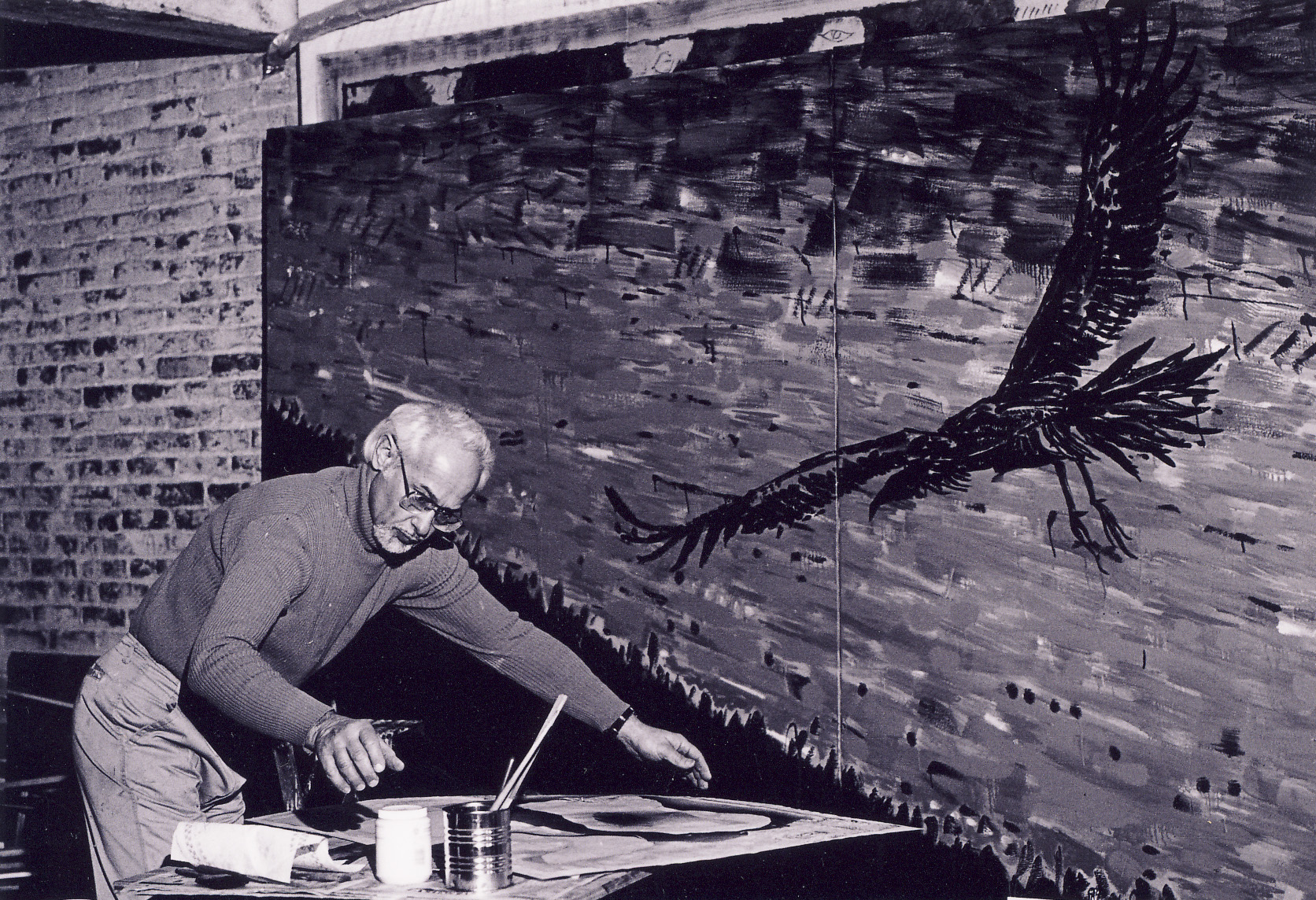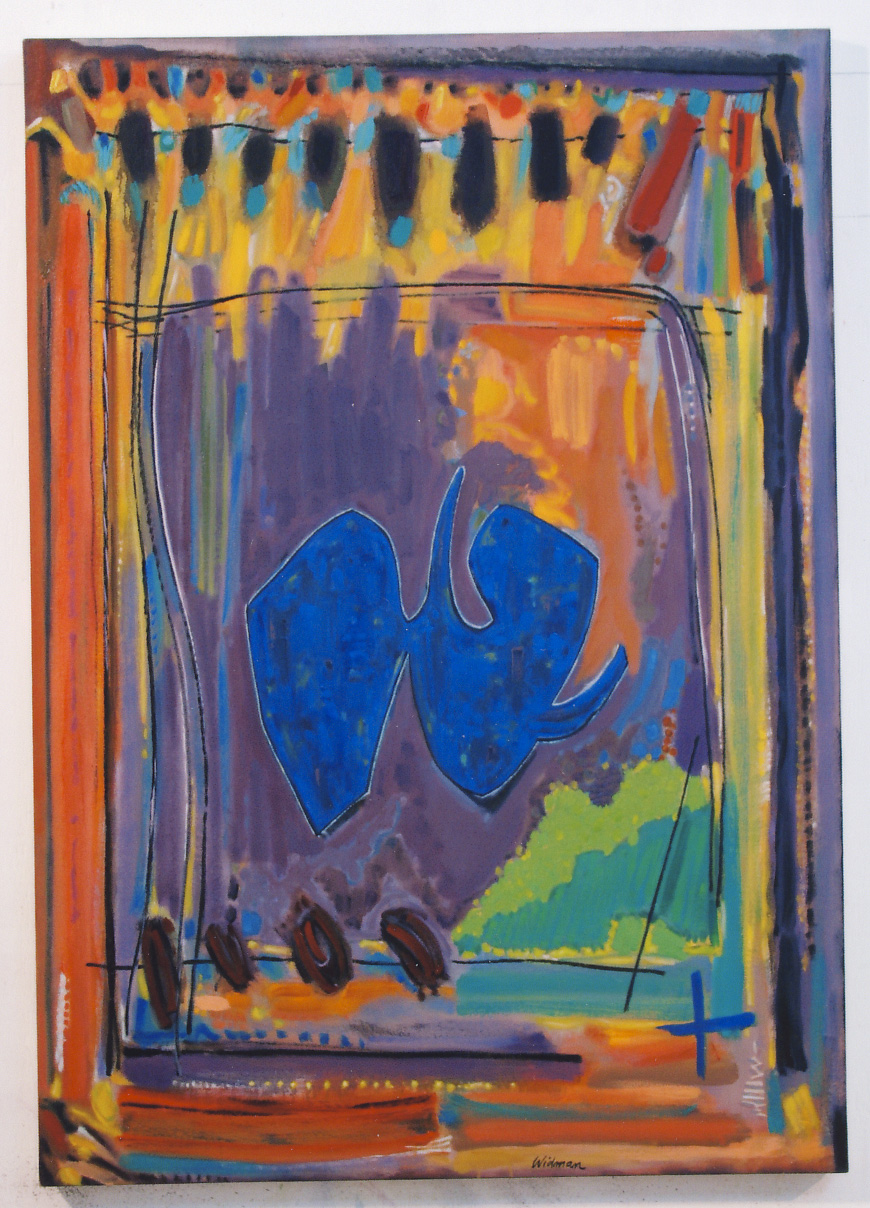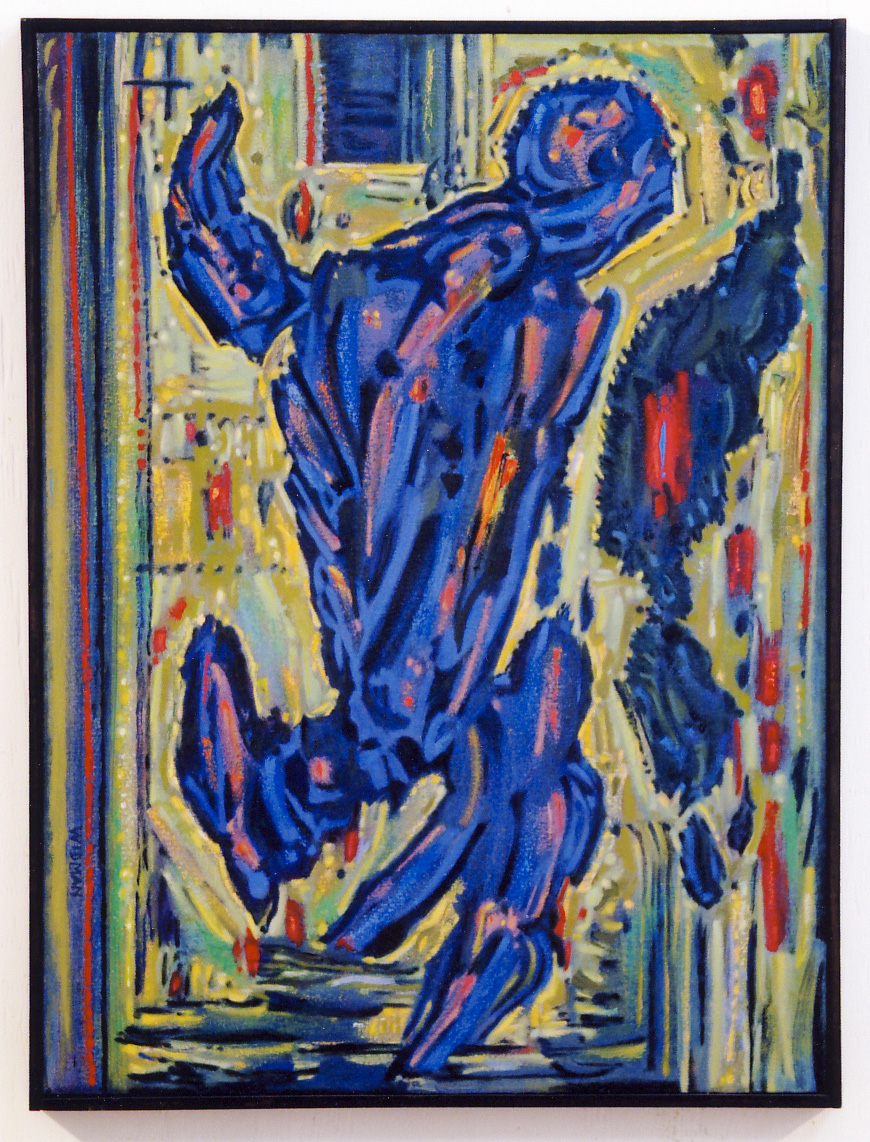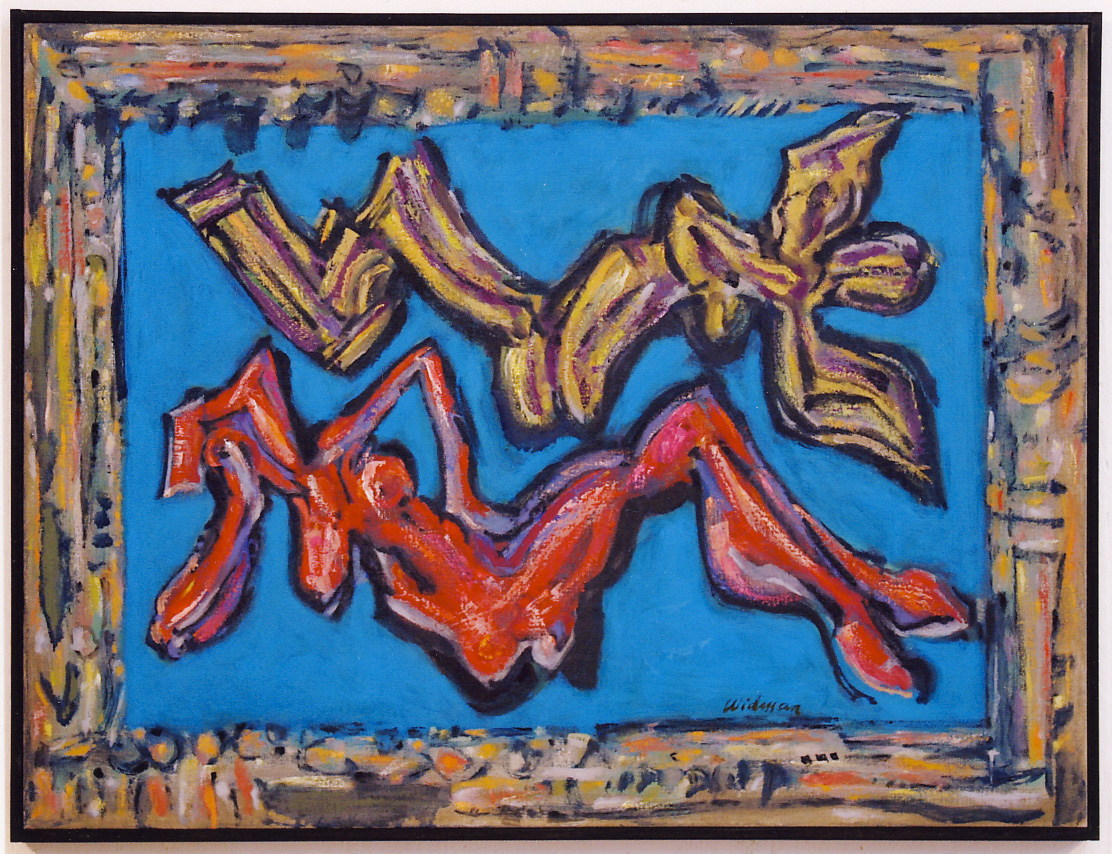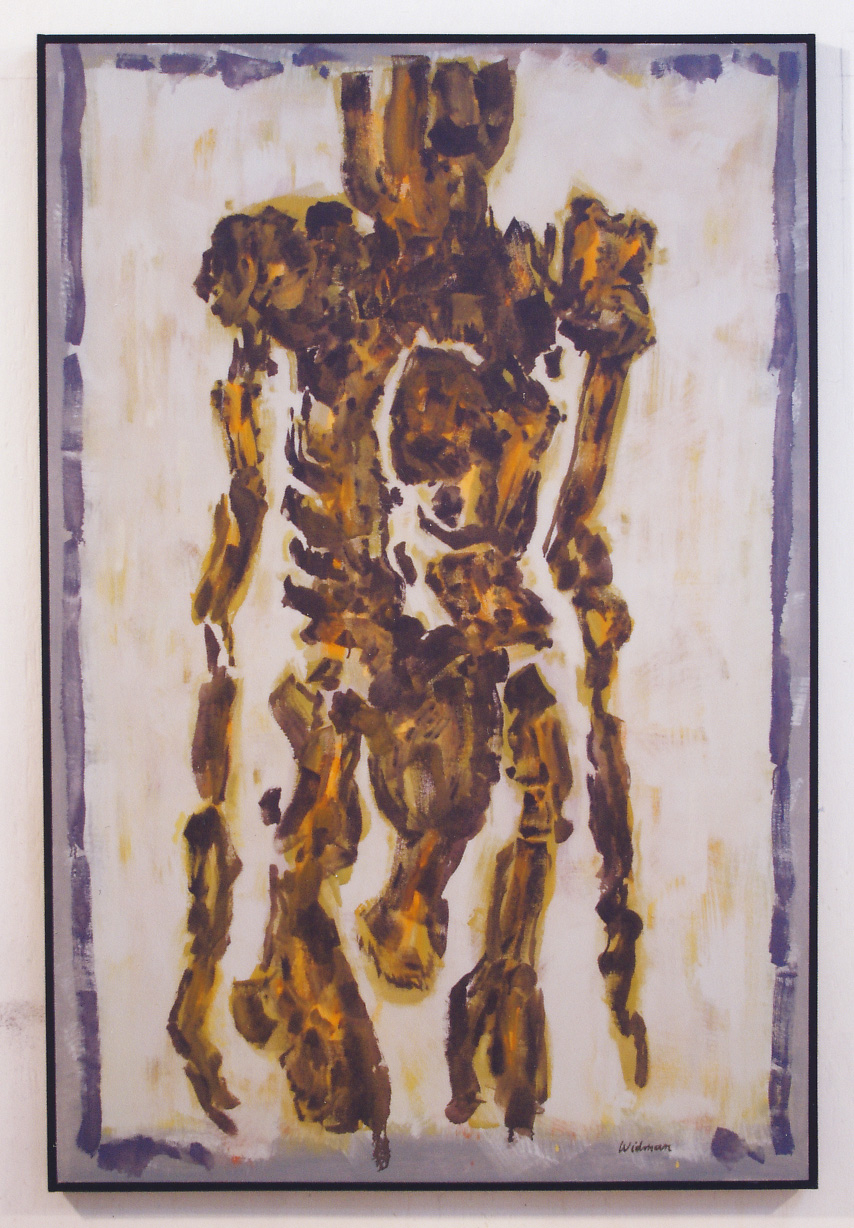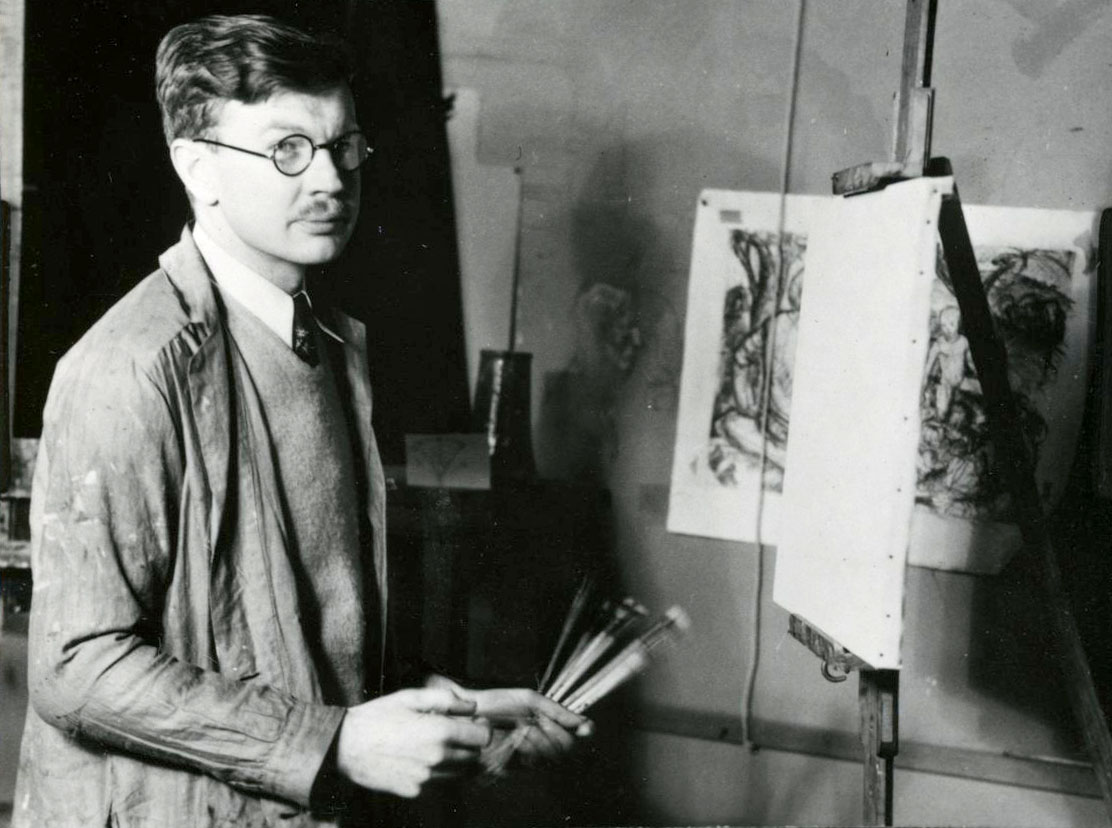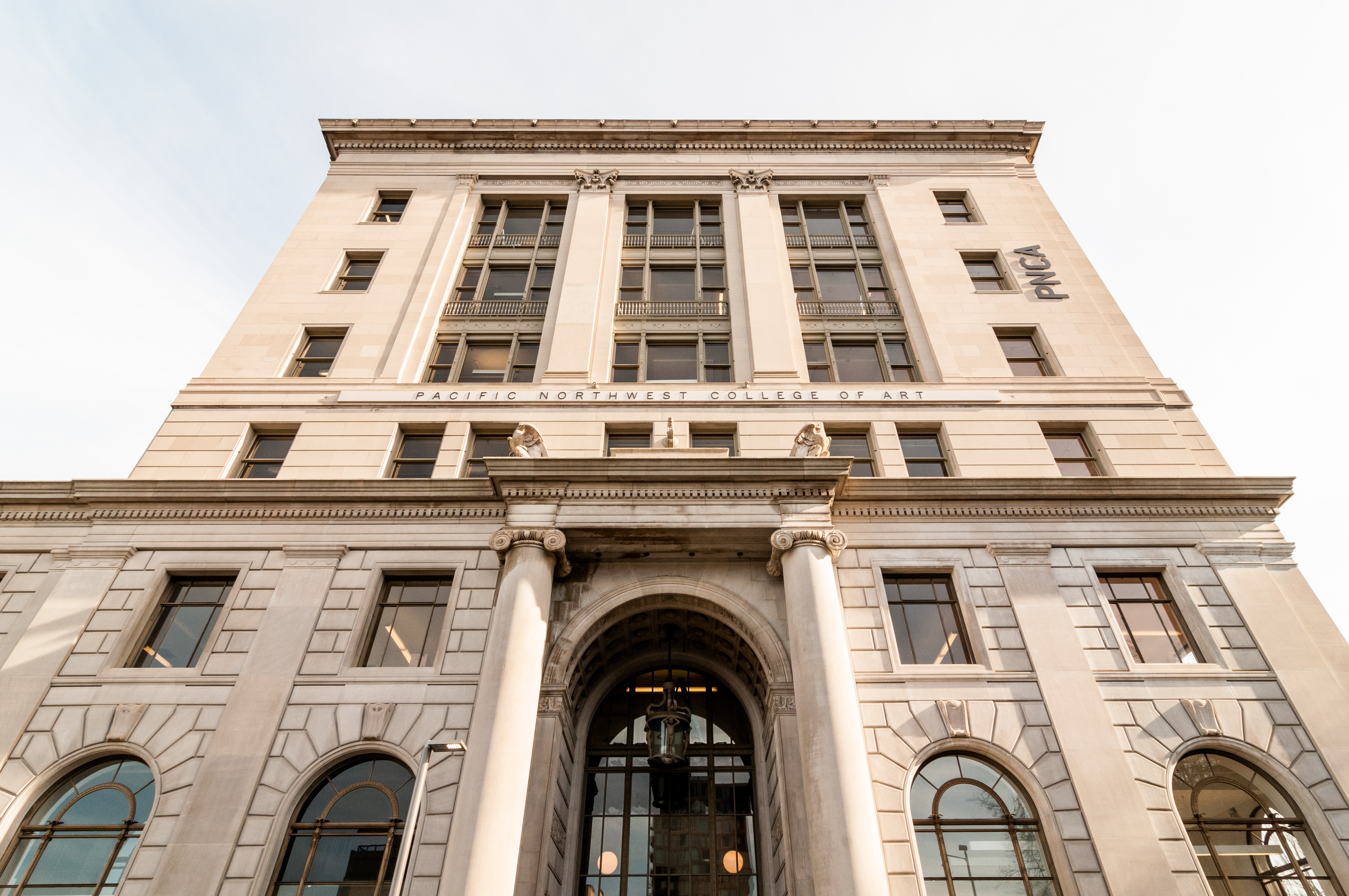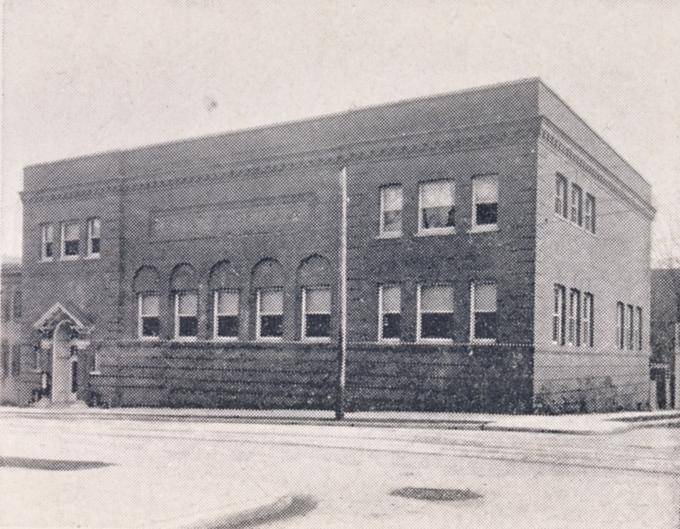Portland painter, teacher, administrator, and arts advocate Harry Widman was born in Englewood, New Jersey, on May 18, 1929. His father's family was German; his mother's, Italian. From his bedroom window Widman had a view of the New York skyline across the Hudson River, and since boyhood that city was an important influence in his life.
Widman studied art at Syracuse University, where he read avidly in many areas independent of his classes, a venture that he later said "gave me the base for what I became." After completing his BFA in 1951, he joined the army and was sent to Germany. In an archaeological museum in Bremerhaven, he saw art and artifacts presented in cultural context and was "taken away" by African art and artifacts. Paleontology, archaeology, classical mythology, and non-Western cultures became sources of inspiration and recurrent themes in his work.
In 1954, Widman enrolled in the University of Oregon to do graduate work in art. Two teachers were particularly important influences: Jack Wilkinson, a theorist, and David McCosh, a "hands-on" artist. At the time, the "Willamette Valley style" was prominent in the department. It was an approach based on color theory and the work of Cezanne, which Widman explored in still-life and landscape subjects.
Widman completed his MFA degree in 1956. While living in central Oregon, he taught Extension Division courses in Roseburg, Grants Pass, Port Orford, and Coos Bay. After a show of his work at Reed College in Portland, he was offered a temporary position at the Portland Art Museum School. The following year, the job became permanent; he moved to Portland in the fall of 1961.
William Givler, dean of the Museum School, had brought "a great group of faculty together, many of them from distant places." Along with Widman, artists Louis Bunce, Michele Russo, and Givler were strongly attuned to modernist aesthetics. "New York was real for those people,” Widman remembered, “so New York was real in the school."
Widman's tenure at the Museum School (now the Pacific Northwest College of Art) extended over thirty-six years. Known as an exceptional teacher, he also was prominent as a leader in school affairs and was a founder of the Alumni and Friends Association in 1975. He served as acting dean from 1978 to 1981, a period of contention and uncertainty in the relationship between the school and the Museum Board that eventually led to the school's independence from the museum. Widman retired from teaching in 1996.
Active in the establishment of the Oregon Arts Commission, Widman was a member of the original City of Portland Art Commission from 1968 through 1971, serving as chair from 1970 to 1971. He served on selection committees for the first large-scale "Percent for Art" allocations and for director of the Portland Metropolitan Art Commission. He frequently lectured at Portland State University and wrote reviews for the Oregonian.
Widman has produced and exhibited a major body of artwork. Impressed by Robert Motherwell's collages, he adopted collage as a way of working and often built on the shapes and ideas that emerged from that process to develop paintings on a greater scale. His ink-wash drawings generate images used in large figurative paintings of mythological and archetypical subjects. The invention of abstract images that could represent identities and express purpose and emotions—The Magician, The Navigator, and The Oracle—has been one of his ongoing quests.
Literary, poetic, and narrative themes and ideas run through Widman’s paintings, and his art reflects his substantial erudition, perceptiveness, and intellectual curiosity. The "unknown images" that inhabit his work symbolically express psychological and philosophical ideas. His sense of color is subtle and unfailing. There is a strong performative aspect, as well: the forms, lines, and marks embody the physical process of making the work, and qualities of his materials are prominent aspects of the pieces. Widman's allegiance to the aims and ideals of modernism is always present, as is his conviction that art is more than entertainment or commodity.
Widman died on October 24, 2014, of complications from Alzheimers.
-
![Harry Widman in his studio about 1991.]()
Widman, Harry, in studio, ca 1991.
Harry Widman in his studio about 1991. Photo Robert Shotola
-
!["Blue Solo" (oil on canvas), 1992.]()
Widman, Harry, Blue Solo, 1992.
"Blue Solo" (oil on canvas), 1992. Harry Widman
-
!["Divergence" (oil on canvas), 1994.]()
Widman, Harry, Divergence, 1994.
"Divergence" (oil on canvas), 1994. Harry Widman
-
!["Study for Monumental Head" (oil on canvas), 1995.]()
Widman, Harry, Monumental Head, 1995.
"Study for Monumental Head" (oil on canvas), 1995. Harry Widman
-
!["Mother and Daughter" (oil on canvas), 1997.]()
Widman, Harry, Mother Daughter, 1997.
"Mother and Daughter" (oil on canvas), 1997. Harry Widman
-
!["Navigator" (mixed media on paper), 1990.]()
Widman, Harry, Navigator, 1990.
"Navigator" (mixed media on paper), 1990. Harry Widman
-
!["Study for Old and Older" (oil on canvas), 1996.]()
Widman, Harry, Old and Older, 1996.
"Study for Old and Older" (oil on canvas), 1996. Harry Widman
-
!["Reaching Down," 1984.]()
Widman, Harry, Reaching Down, 1984.
"Reaching Down," 1984. Harry Widman
-
Image Title.
Image Description Image Creator
Related Entries
-
![David McCosh (1903-1981)]()
David McCosh (1903-1981)
David McCosh, an important Oregon painter and influential teacher, was …
-
![Louis Bunce (1907-1983)]()
Louis Bunce (1907-1983)
Louis Bunce, a major painter and printmaker beginning in the 1930s, is …
-
![Pacific Northwest College of Art]()
Pacific Northwest College of Art
Pacific Northwest College of Art (PNCA), founded in 1909 by the Portlan…
-
![Portland Art Museum School]()
Portland Art Museum School
In October 1909, the Portland Art Association (PAA) opened its school, …
-
![William Givler (1908-2000)]()
William Givler (1908-2000)
William Givler was an artist and educator who joined the faculty of the…
Map This on the Oregon History WayFinder
The Oregon History Wayfinder is an interactive map that identifies significant places, people, and events in Oregon history.
Further Reading
Allen, Ginny and Jody Klevit. Oregon Painters: The First Hundred Years
(1859-1959). Portland, Ore.: Oregon Historical Society Press, 1999.
Hull, Roger. Harry Widman: Image, Myth and Modernism. Salem, Ore.: Hallie Ford Museum of Art at Willamette University, 2009.

